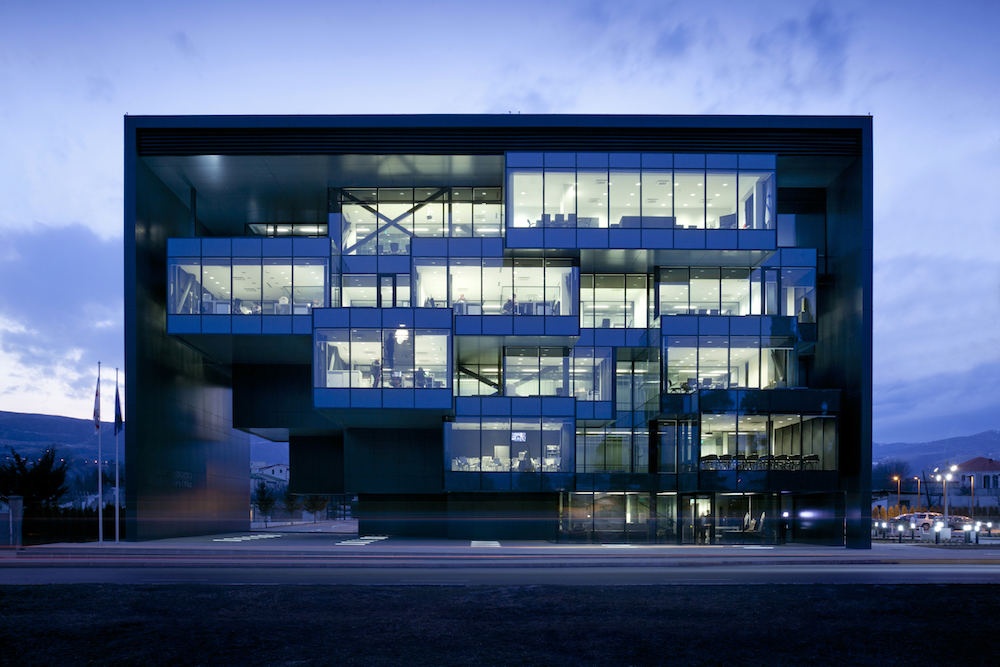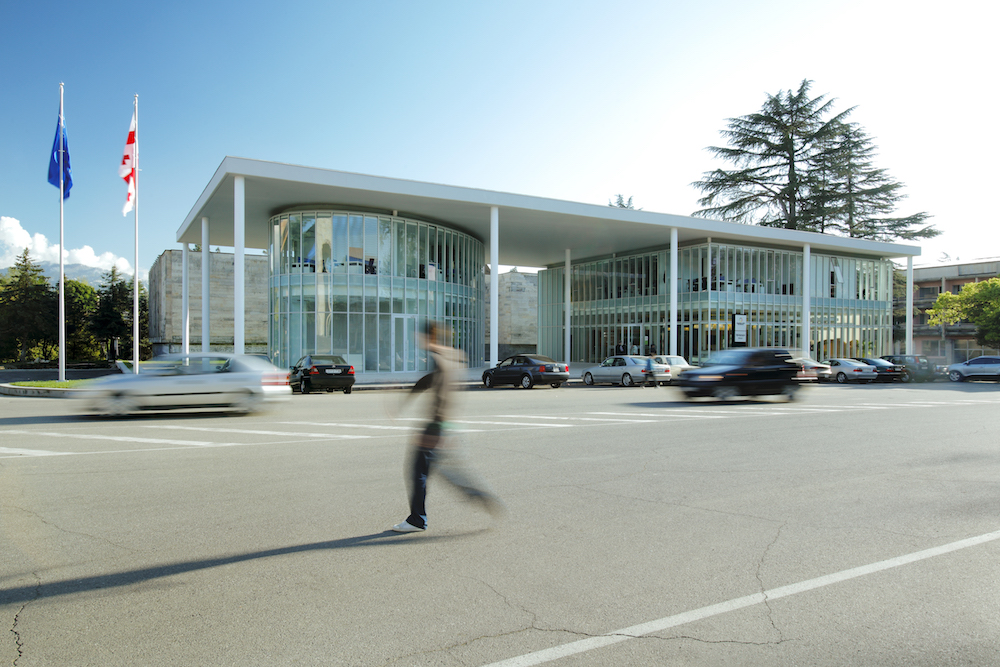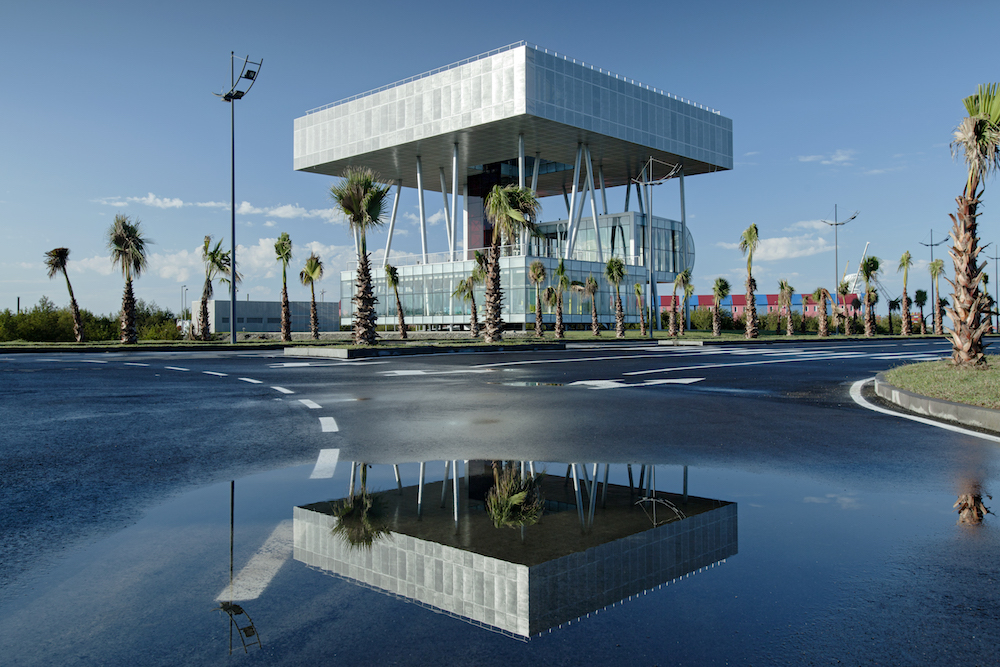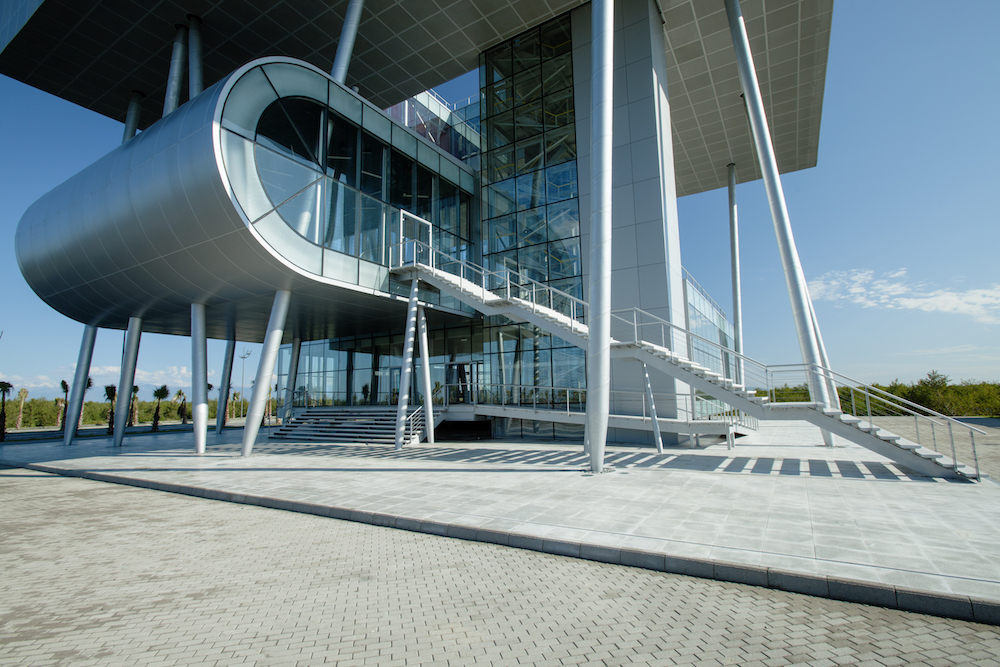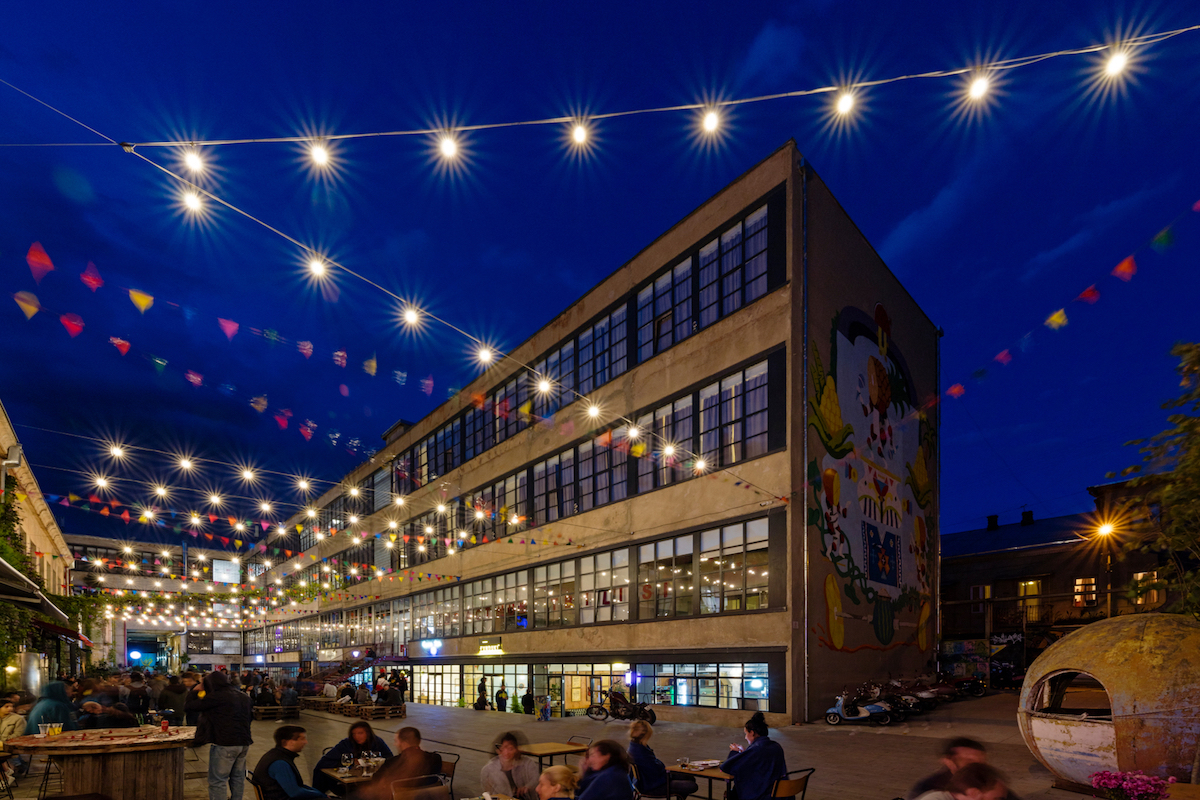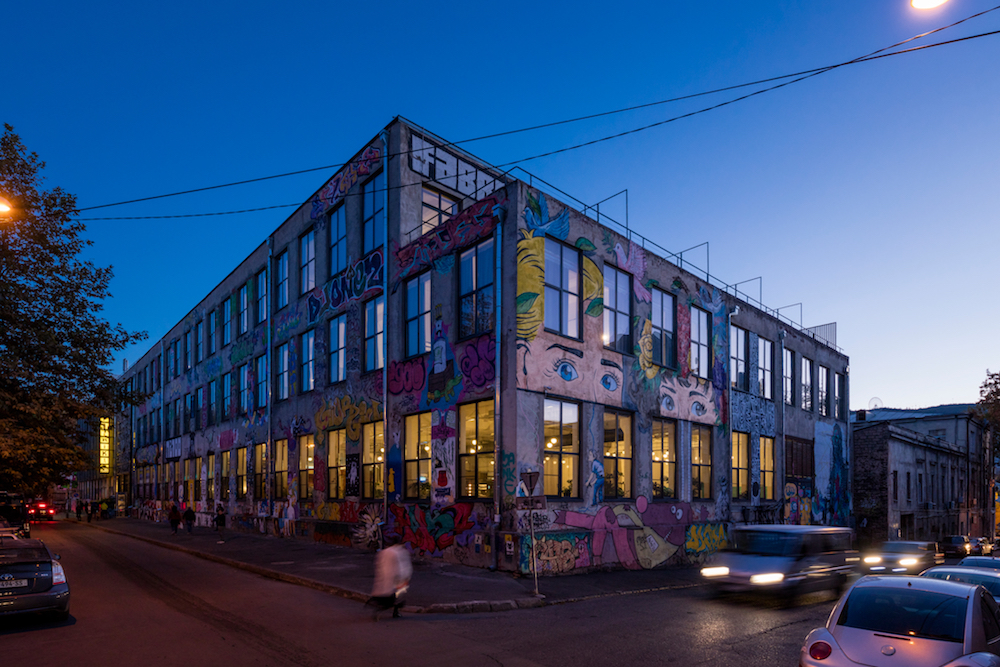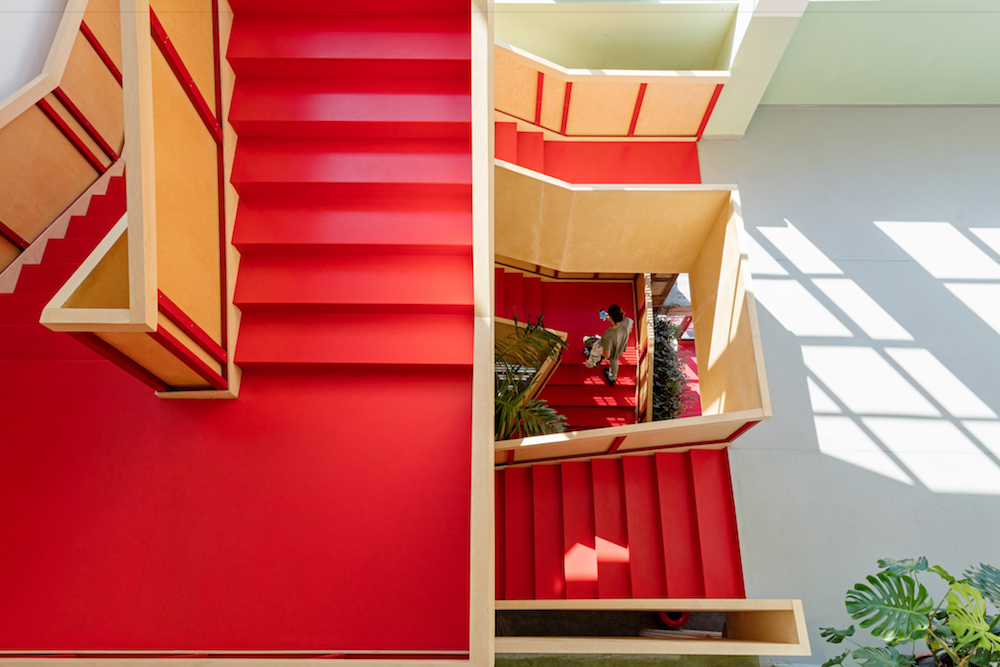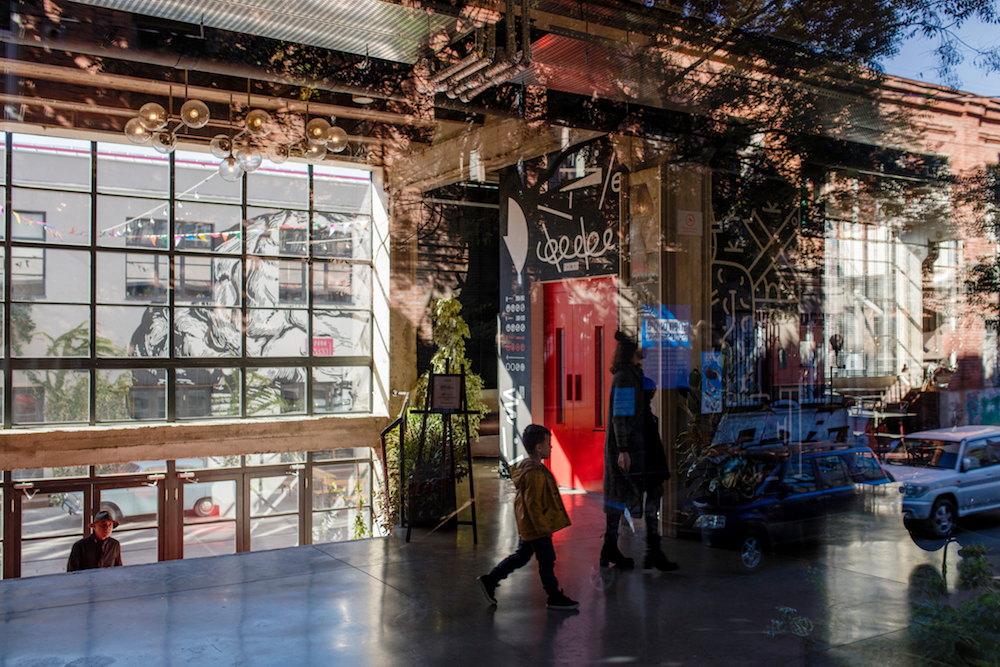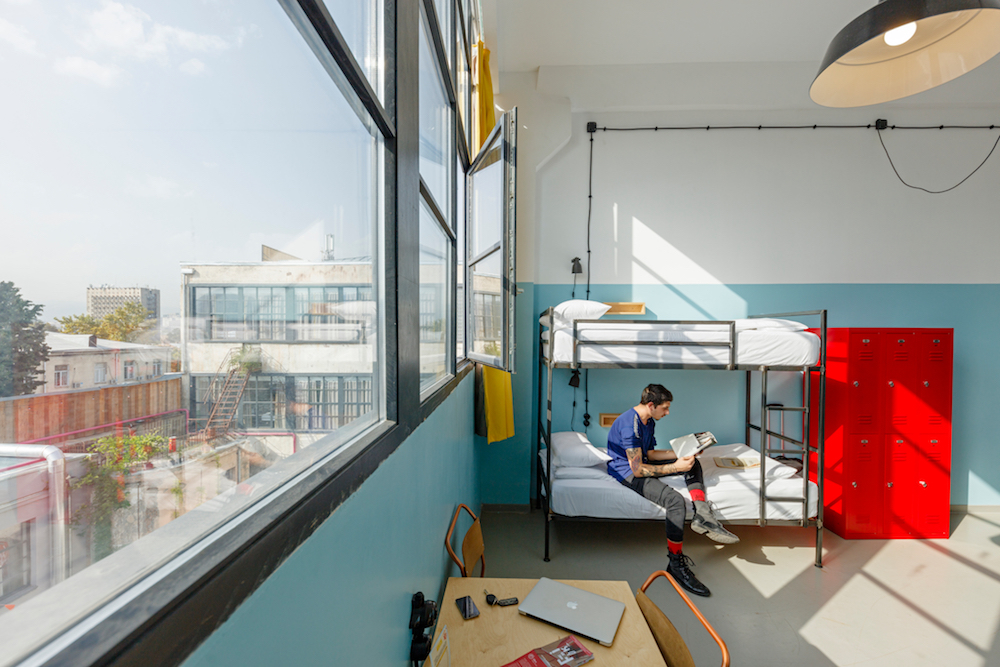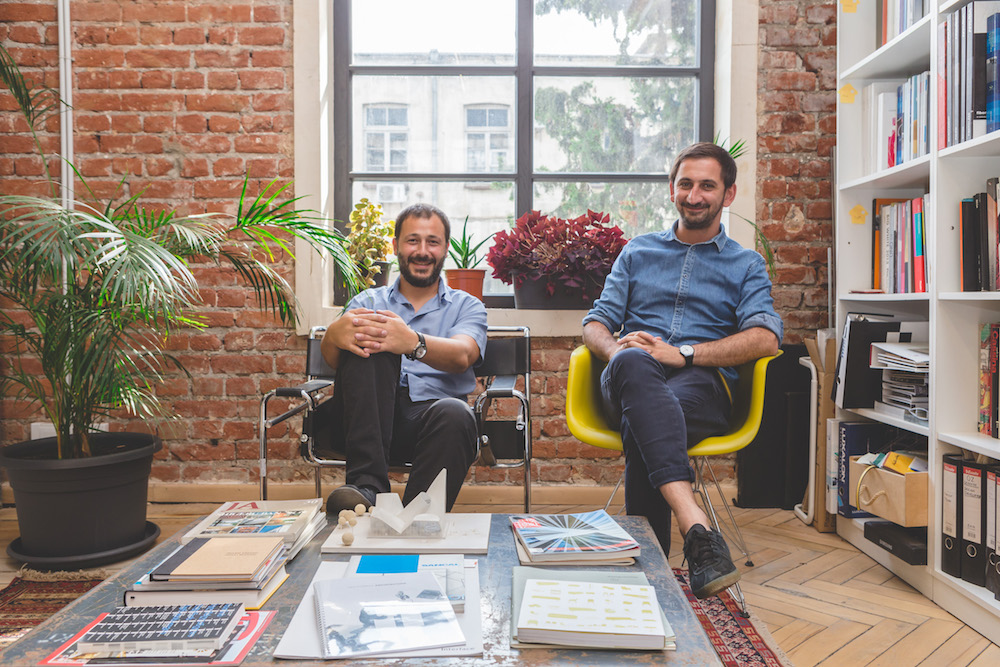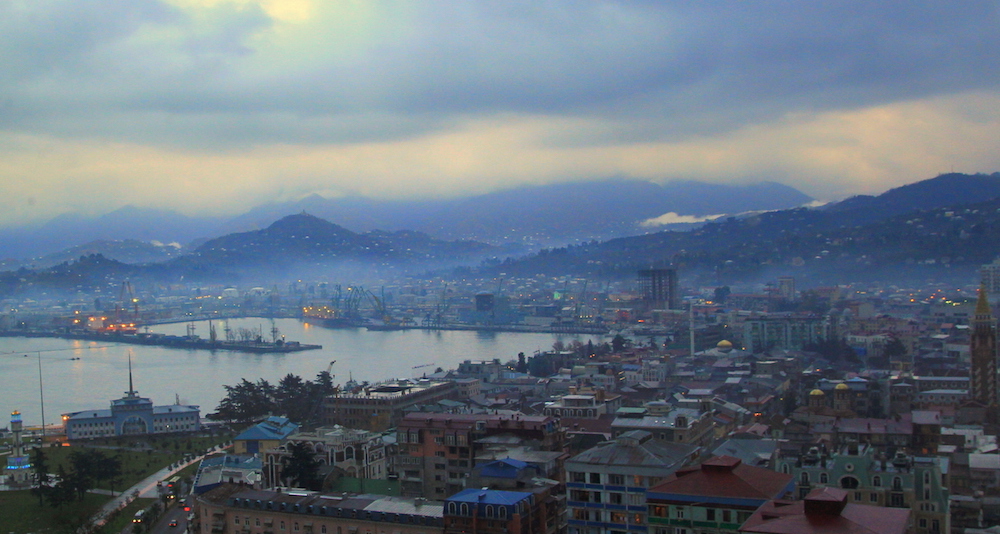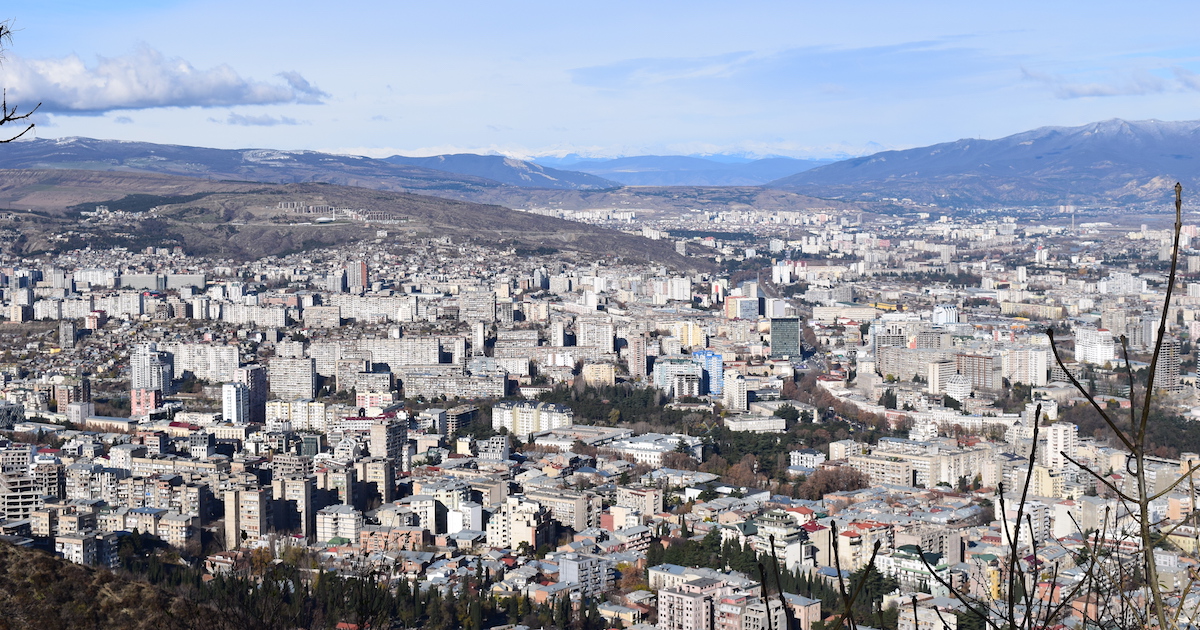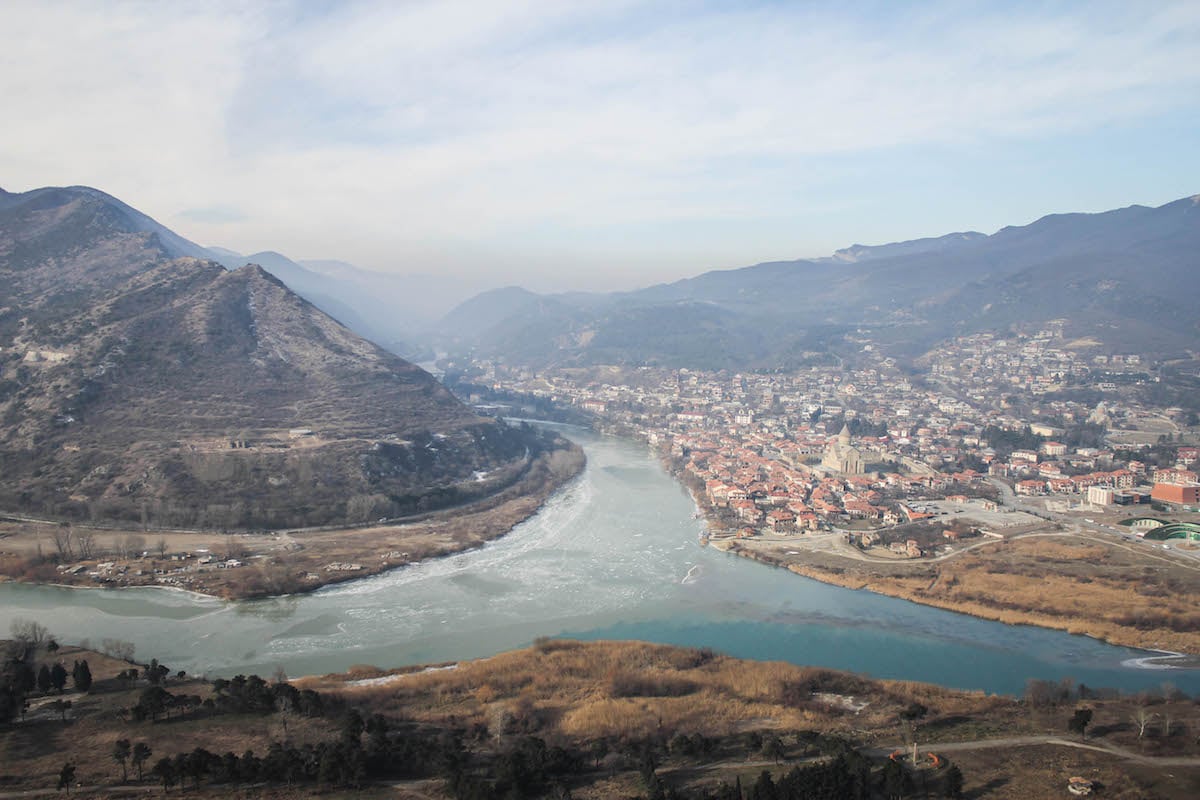Regenerating Georgia: the architects behind Tbilisi’s Fabrika look beyond the capital
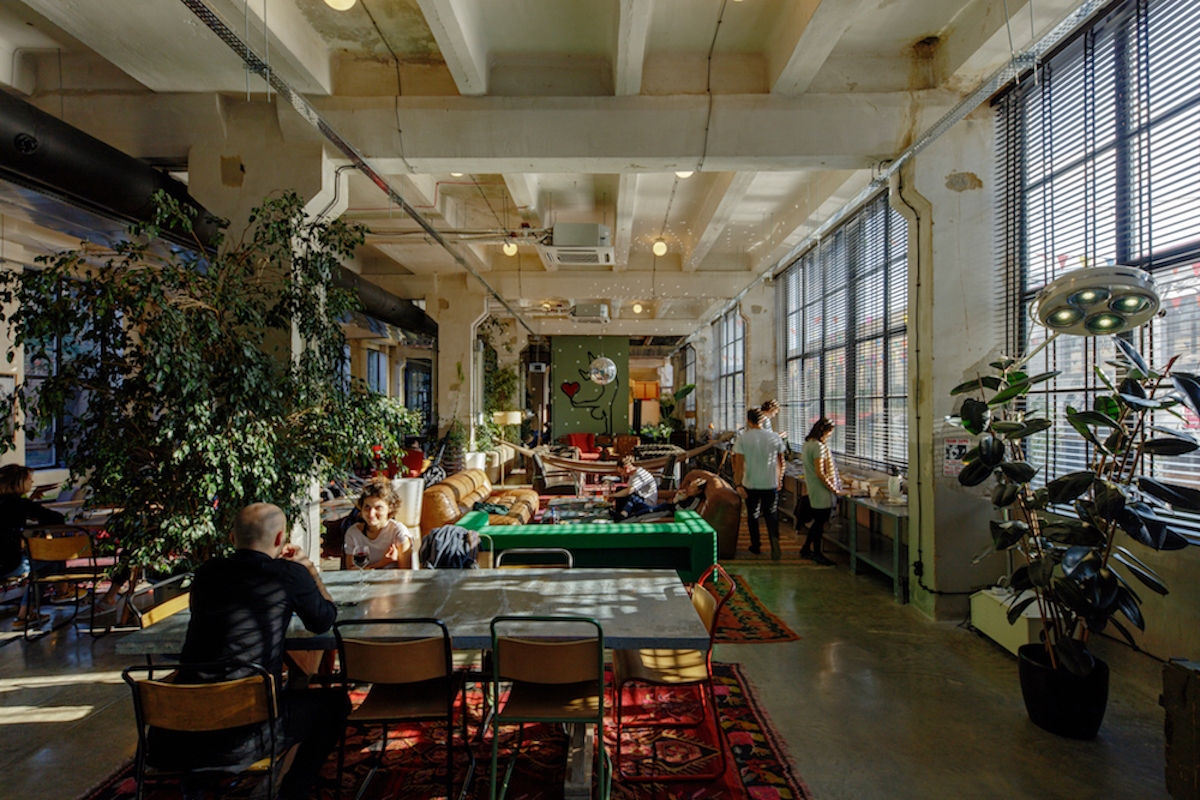
Their renovation of a Soviet-era sewing factory into a creative hub and hostel has been one of Tbilisi’s biggest success stories. With Multiverse Architecture now set to broaden its horizons, we met with its masterminds to talk gentrification and urban politics
One of the cultural figureheads of new Tbilisi, Multiverse Architecture — or MUA — is now planning to leave its mark on other Georgian cities, first among them the Black Sea resort of Batumi. Led by Gogiko Sakvarelidze and Devi Kituashvili, MUA were behind Fabrika — an abandoned Soviet-era sewing factory on Tbilisi’s previously sleepy Left Bank that was renovated in 2016 and became a focal point of the vibrant, ramshackle Georgian capital alongside leading lights like techno haven Bassiani, or fashion vanguardists George Keburia and Mariam Gvasalia. Now a creative complex populated by concept stores, café-bars, a co-working area and a hostel, Fabrika has become one of Tbilisi’s greatest success stories and a leading example of the kind of post-industrial cool that has overtaken post-socialist capitals from Warsaw to Moscow.
When I meet Kituashvili and Sakvarlidze in their offices inside the Fabrika complex, they don’t shy away from the impact the project had on their lives. “It’s made a huge difference, not just in the area but city-wide,” Kituashvili says. “Now it’s everyday life for us, but this was difficult to imagine before. Although,” he grins, “we’re still considered to be ‘young architects’.” Perhaps not for much longer. Fabrika was a triumph, and as with all such ventures, has also opened MUA up to accusations of gentrification and questions about the sustainability. With the practice now planning to expand across the country, it’s a good time to ask how MUA managed to pull off their success, and what they can tell us about the future of Georgia’s urban regeneration.
MUA has helped shape the face of contemporary Tbilisi, but its history stretches back slightly further, to the presidency of Mikheil Saakashvili. The neoliberal boom years at the turn of the last decade saw an explosion of much-lamented, presidentially-ordained “statement” architecture by foreign powerhouse studios, but also provided ambitious local architects with the opportunity to actually get stuff built. MUA came about after a split between the partners at influential firm Architects of Invention, and its early projects very much belong to the Saakashvili period. The Columbia Law School-educated president ruled as a radical reformer, promising to tackle corruption, and a slew of new public buildings were commissioned to reflect the new era. MUA were responsible for the Tbilisi Prosecutor’s office (2011-12) and the House of Justice in the western city of Ozurgeti (2011-12), both of which literalise Saakashvili’s transparency drive in their compartmentalised glass geometry. Most reflective of the contradictions of the time is their Lazika Municipality building (2012). Lazika was a proposed planned city on the Black Sea coast, a sign of Saakashvili’s ambition and his folly. It was never completed and the Municipality is now something of a white elephant. Saakashvili was voted out in 2013, and MUA went quiet until their Fabrika success.
Fabrika was a triumph, and as with all such ventures, has also opened MUA up to accusations of gentrification and questions about the sustainability
Not that Kituashvili is particularly nostalgic for the good old days. “The economy is actually better now,” he says. “It was easier to build [then] but not to build something extraordinary. Now clients are more experienced. Before they would just give you money.” Fabrika was a game-changer for MUA in both financial and conceptual terms, shifting their focus from a “pure” architecture of forms to a concern with interior design and the social aspects of planned space. “Our minds started working in a different way,” Kituashvili continues. Sakvardelidze concurs: “With Fabrika we feel that we can change not just buildings, but society; we can impact on people.” The attention to interior detail at Fabrika is certainly impressive, avoiding the harsher, red-brick clichés of post-industrial development in favour of a subtler use of tiling and furniture.
Fabrika was funded by the gambling magnate turned hotelier Temur Ugulava, an influential figure in Georgia thanks to the success of his branded hospitality ventures (his other pet project is the Rooms Hotel franchise — also notable for its classy interior design). Kituashvili points out that Fabrika’s location — in a residential district on the “wrong side” of the city’s Mtkvari River, previously known more for flea markets than nightlife — made Ugulava’s decision to invest both riskier and, counterintuitively, easier. “We chose a location which was cheap and which nobody needed,” he says. “It made it possible: if the property was not this cheap then the project wouldn’t make sense economically.” Two years on, how does Ugulava rate his decision? “The investor is happy,” is the curt response.
Of course, return on investment is not the only way to judge a building’s success. Fabrika’s meteoric rise has altered the character of the neighbourhood. When I ask the pair whether they are guilty of contributing to gentrification, it’s clear it’s not the first time they’ve faced the question. “Those problems that exist in the city should be addressed, and I think the city municipality should do more,” Kituashvili begins, cautiously, before getting into his stride. “Right now, I think [Fabrika] is the best thing, because it challenges the main problem, which is that the only type of development is residential stuff that brings no good at all, it just destroys.” He is referring to the wave of high-rise blocks that crowd the city centre, thrown up by shady developers without consultation or much market demand.
The underlying issue, Kituashvili claims, is economic. “If [projects like Fabrika were] going to happen all around I think it would be good, but I really doubt that it could happen,” he continues. “It’s a large investment that doesn’t pay back as well as housing.” It’s fair to point out that Tbilisi is not London: no one is selling their property near Fabrika and moving elsewhere because the market here is not so frenzied; for now, at least, the locals have remained local. Sakvardelidze argues that the development, unlike so many in the city, has actually created new public space that residents are putting to good use: “they can rent the spaces, they can do business here. It’s very popular.”
MUA have as good a chance as any to set the standard, though they prefer to speak in terms of local benefit
Resistance may prove futile in any case. With Ugulava on board, MUA have their sights set on expansion to Georgia’s other major cities. Next up will be a series of projects in the south-western resort town Batumi, including a new space along the same lines as Fabrika. “It’s an existing building, we’re re-planning the whole thing,” Kituashvili says. “What we’re trying to do is to use the backstreet opposite, involve the shop owners there; hopefully we can buy some of the buildings there so that street becomes part of the space.” It’s not all big-hearted public engagement, though: a maquette on their desk of a sleekly modernist, Bond villain-style clifftop development, what Kituashvili describes as “a more upscale residential development on the seaside”, is also in the offing. So is an attempt, in collaboration with the town’s chief architect, to push for the pedestrianisation of old Batumi. These days, MUA have more than interior design on their minds.
Is the Fabrika aesthetic set to take over the country? With big money backers in tow, MUA have as good a chance as any to set the standard, though they prefer to speak in terms of local benefit as much as national ambition. “If the locals come then people will know something is happening,” Sakverlidze says of the future “Fabrika Batumi”. Still, the urge to scale up is ever-present. Georgia is a small country with an under-realised potential for domestic tourism, Kituashvili explains. “People in Tbilisi want to get out of town, but there is no second spot where you can easily go.” After Batumi, the next stop will be the central city of Kutaisi, which recently started accepting cheap direct flights from Western Europe. “Kutaisi will start to grow now,” Sakvarlidze says. “It’s in the middle of the country so you can plan your holiday around it, you can go to the mountains, to the seaside.”
Given the volatility of Georgia’s political economy, it’s unlikely that MUA will ever realise its dream of a unified, stylish tourist infrastructure tying the nation together. But since I’m in town for the inaugural Tbilisi Architecture Biennial, I decide to ask the pair how they would fix the city’s urban fabric if they had total control. “I would ban all types of new developments,” Kituashvili says bluntly. “And I would make a proper master plan, spend a year’s budget to have the best of the best involved, plan 50, 100 years ahead.” He’s sure of one thing: there would be no quick fix. “When you can still demolish an old house and build a block for money in the same area, you can see what’s going to happen. But if everyone knows that there is no choice but to renovate, that’s going to bring a new economy, no?” In this hypothetical world of rationally planned public space, MUA’s example to developers — that you don’t need to tear down to build, that existing space can be reworked and reinvigorated — would be even more promising than it already is.
Kituashvili’s is a practical response in keeping with MUA’s clear-sighted expansionism. Georgia may have its fair share of issues, but Sakvarlidze has no time for arguments based on ideas of national character. “It’s not about the mentality. People think that our mentality is different but there is nothing to that. If something works, it works for everybody.” I can see where he’s coming from. By this logic, after all, MUA is a straightforwardly inspirational example. All you need is a keen eye for architectural detail, a fortuitous location, big-money investment, and a hungry creative population on the lookout for a new venue. Then you can make it anywhere.
